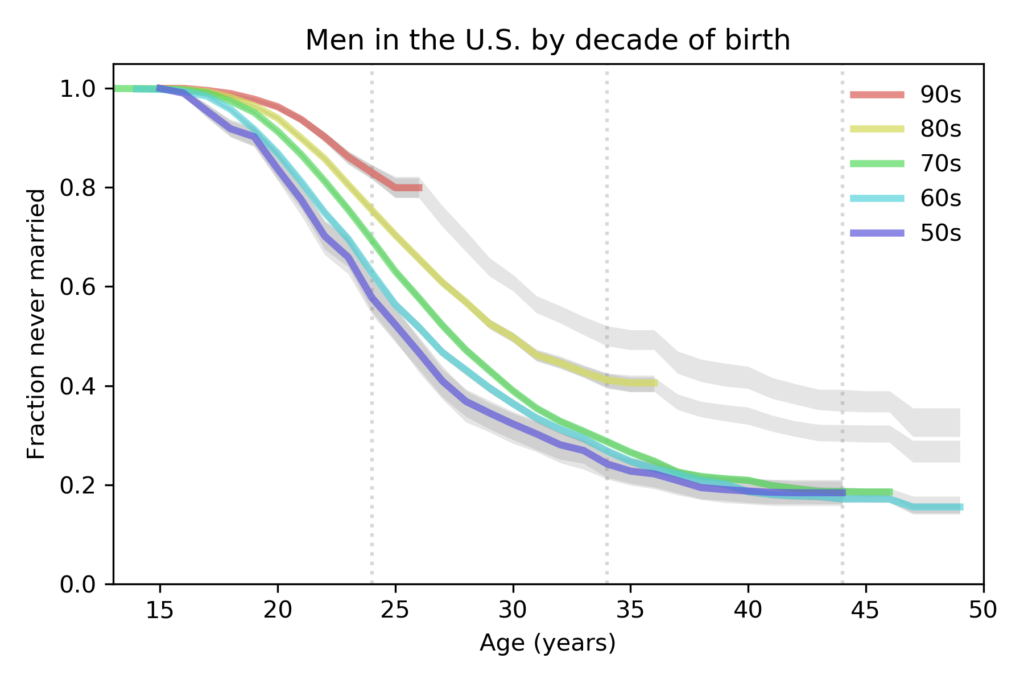Are men getting married later or never? Both.
Last week I wrote about marriage patterns for women in the U.S. Now let’s see what’s happening with men.
Again, I’m working with data from the National Survey of Family Growth, which surveyed 29,192 men in the U.S. between 2002 and 2017. I used Kaplan–Meier estimation to compute “survival” curves for the time until first marriage. The following figure shows the results for men grouped by decade of birth:

The colored lines show the estimated curves; the gray lines show projections based on moderate assumptions about future marriage rates. Two trends are apparent:
- From one generation to the next, men have been getting married later. The median age at first marriage for men born in the 1950s was 26; for men born in the 1980s is it 30, and for men born in the 1990s, it is projected to be 35.
- The fraction of men never married at age 44 was 18% for men born in the 1950s, 1960s, and 1970s. It is projected to increase to 30% for men born in the 1980s and 37% for men born in the 1990s.
Of course, thing could change in the future and make these projections wrong. But marriage rates in the last 5 years have been very low for both men and women. In order to catch up to previous generations, young men would have to start marrying at unprecedented rates, and they would have to start soon.
For details of the methods I used for this analysis, you can read my paper from SciPy 2015.
And for even more details, you can read this Jupyter notebook.
As always, thank you to the good people who run the NSFG for making this data available.